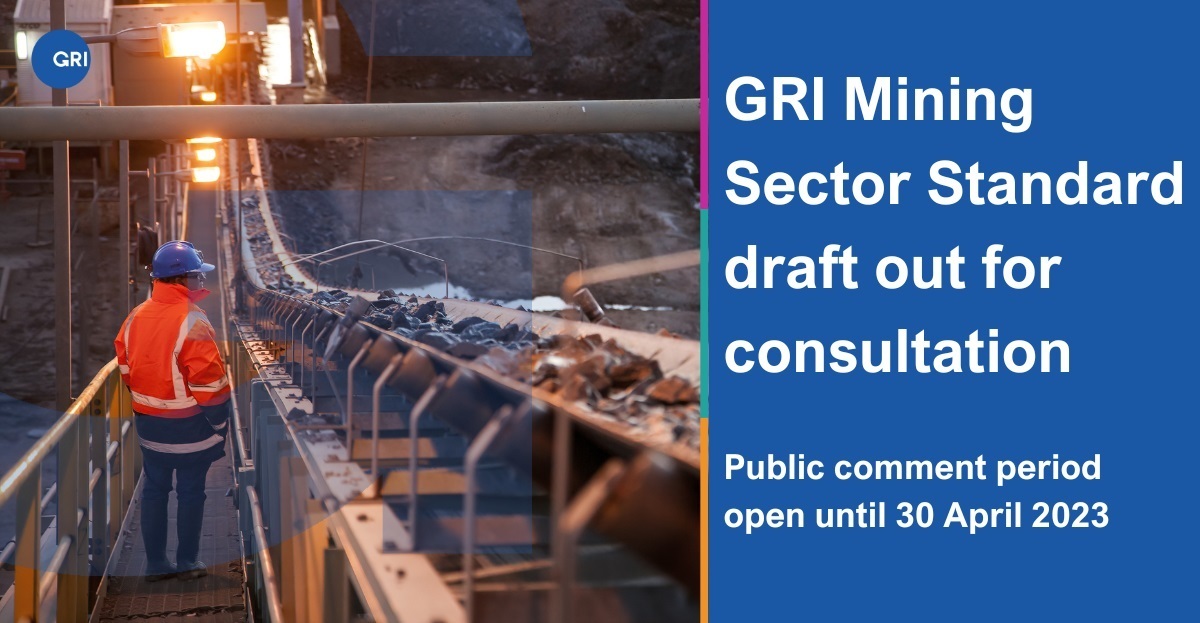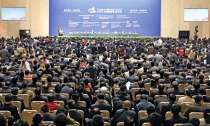Unearthing the truth about mining impacts
31.03.2023How can a sector that is central to the supply of the minerals required for well-functioning modern societies reconcile its socio-economic contributions with its impacts on the environment and people? This debate is at the heart of a proposed new sustainability reporting standard for mining companies.

A public comment period for the draft Mining Standard is underway, in what will become the latest addition to a growing suite of Sector Standards from Global Reporting Initiative (GRI). Developed by a multi-stakeholder expert group, the Standard identifies 25 topics that encapsulate the full range of impacts for mining organizations, including:
- Environmental: climate change, greenhouse gas and air emissions, biodiversity, water and waste;
- Social: community engagement and human rights, including those of Indigenous Peoples, land and resource rights, modern slavery and forced labor;
- Economic: anti-corruption, procurement, and payments to governments.
The exposure draft, open for consultation until 30 April, features three topics that are new to the GRI Standards: tailings facilities and hazardous waste streams, artisanal and small-scale mining, and operating in conflict zones. Crucially, it sets expectations for site-level reporting, which is needed to establish local accountability and underpins the ‘social license to operate’ of mining firms.
Judy Kuszewski, Chair of the Global Sustainability Standards Board (GSSB), the independent body that sets the GRI Standards, said: “From raw materials for infrastructure, to vital components in transportation and communications, demand for mined minerals continues to rise. Furthermore, renewable energy development and storage, essential for the low-carbon transition, is a mineral intensive enterprise. Mining operations can be an important contributor in lower-income economies yet companies in the sector have well documented negative impacts. These range from biodiversity loss and pollution, to human rights concerns such as the displacement of communities, and financial corruption. GRI’s draft Mining Standard reflects the likely material topics that any organization in the sector can be expected to report on, reflecting stakeholder demands for consistent, site-specific disclosure. I encourage all those with an interest in mining and its impacts to take part in the public comment and shape a standard that will advance transparency throughout the sector.”
This Standard will apply to all organizations engaged in mining and quarrying – including exploration and extraction, primary processing, and related support services – with the exception of Coal, and Oil and Gas (for which GRI Sector Standards are already available).
The draft Standard aligns with existing ESG and disclosure frameworks for the sector – including those set by the International Council on Mining and Metals (ICMM), the Initiative for Responsible Mining Assurance (IRMA), Copper Mark (all represented on the working group), the OECD, Extractive Industries Transparency Initiative (EITA), and Global Industry Standard on Tailings Management (GISTM).
Bryony Clear Hill, Manager – Standards, Reporting and Circular Economy at ICMM, said: “ICMM, whose members have been committed to reporting with GRI for a number of years, hopes that this Sector Standard will help mining companies to communicate key information about their impacts in a consistent and standardised way. It is important that we achieve a well-rounded standard, which supports clear and accessible disclosure and balances the industry’s perspective with that of other stakeholders. We look forward to fruitful engagement in the consultation to ensure this GRI Standard achieves its full potential.”
Kristi Disney Bruckner, IRMA Senior Policy Advisor, said: “Mining needs public disclosure that addresses the sector’s wide range of environmental and social risks, impacts and benefits, supported by high-bar and holistic standards to earn and maintain trust. IRMA commends GRI for facilitating deep engagement of expertise to create this standard. We encourage all stakeholder groups – including mine workers, mine-affected communities, and the unions and NGOs that represent these interests – to review and comment on the draft to further inform its development.”
Michèle Brulhart, Executive Director of the Copper Mark, added: “The exposure draft for the GRI Mining Standard marks an important milestone to advance transparency on the sectors’ impacts, by defining clear requirements and using a strong multi-stakeholder process to do so. Participants in the Copper Mark are already required to report annually on their sustainability performance using internationally recognized standards such as GRI’s. When finalized, I believe this standard will help the industry respond to growing accountability expectations for impacts on people and the environment.”
About the draft Mining Standard
The draft Standard has been presented by GRI at an event on 7 February at Alternative Mining Indaba in South Africa, the world’s largest mining investment conference. Free global webinars on the consultation will take place, on 23 February and 2 March.
The public comment period is open from 7 February until 30 April 2023, with stakeholders encouraged to submit views on the exposure draft, including its feasibility and completeness, through an online form. After feedback has been considered, the final Mining Standard is expected to publish in Q3 2023.
Adding to a program of GRI Sector Standards that will span 40 sectors, the mining project was launched by the GSSB in early 2022, with an independent Working Group appointed. Drawn from a global base, membership includes representatives from relevant business commodities, civil society organizations, labor bodies and mediating institutions.
Scrutiny at national and international levels means reporting rates in the extractive industries is relatively high, with 80% of major companies reporting on sustainability (KPMG Survey of Sustainability Reporting, 2022), most of which use the GRI Standards. However, stakeholders widely regard the quality of reporting as inadequate (UNEP Sustainability in the Mining Sector, 2020).

